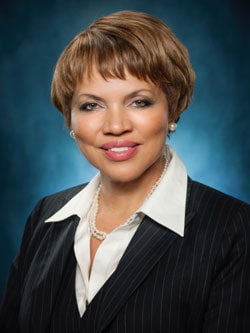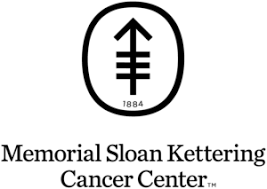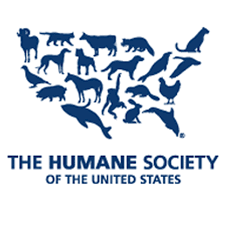Louisiana Association of Food Banks Now Called Feeding Louisiana. Michael Towner, Iconic Legacy.9/28/2018 According to the USDA, 1 in 6 Louisiana households with more than 784,000 family members struggle to put food on the table. 1 in 20 households report skipping meals because they don’t have enough money for food. In Louisiana, 23% of seniors, nearly 1 in 4, face the threat of hunger. This ranks Louisiana as the second worst state for senior hunger. Feeding America estimates that 1 in 4 Louisiana children live in households that are food insecure. In several rural parishes one-third of children are food insecure.  Louisiana offers a Feeding Hope specialty license plate. Feeding Louisiana opted to not use the John Lennon self-portrait image that is used on the 'Imagine' license plate for Feeding Florida, which has raised nearly $4 million so far. In FY 2016, 4 'Solving Hunger, Feeding Hope' specialty license plates were sold in Louisiana, in FY 2017, 1 was sold and in FY 2018, 6 were sold. Michael Towner
0 Comments
Top Louisiana Special License Plates, 2017/2018 Fiscal Year. Michael Towner, Iconic Legacy.9/27/2018  Currently, Louisiana has 185 special license plates. The state has about four million registered cars and trucks. Louisiana license plates are produced at the state prison, and by a machine invented in the early 1900s at Angola, a maximum-security prison farm in Louisiana operated by the Louisiana Department of Public Safety & Corrections. It is named "Angola" after the former slave plantation that occupied this territory. 1 World Champion Saints 1,047 2 Antique Vehicle 954 3 LSU @ Baton Rouge 872 4 Army Veteran 828 5 Environmental Education 757 6 Professional Firefighter 479 7 Marine Corp Veteran 398 8 White Tail Deer 364 9 Navy Veteran 355 10 Active Duty Army 290 11 Air Force Veteran 281 12 I'm Cajun 280 13 U of Louisiana @ Lafayette 274 14 Black Bear 218 15 300th Anniversary New Orleans 209 16 Protect the Wild Dolphins 183 17 Louisiana Tech 145 18 Retired Army 140 19 Choose Life 125 20 Zulu Social Aid & Pleasure Club 111  Claire Babineaux-Fontenot Claire Babineaux-Fontenot The nation’s largest hunger-relief organization, Feeding America, has appointed a new CEO who will be based in its Chicago headquarters. Feeding America’s board announced today that Opelousas, Louisiana native Claire Babineaux-Fontenot, 54, will take over as CEO on Oct. 1. Ms. Babineaux-Fontenot is the Founder of CBF Consulting Group, LLC located in Dallas, Texas. She had previously worked with Wal-Mart for 14 years and her most recent role was Executive Vice President and Global Treasurer for 14 years. At this role, she had global responsibility for tax, treasury operations, capital markets, investor relations, global risk management, casualty and self-insurance with teams across 28 countries and over 1,000 associates worldwide.Prior to her time at Wal-Mart, she was a Partner and Tax Practice Leader for Adams and Reese LLP, the largest law firm in the Gulf South Region. She was also a Dispute Resolution Practice Group Leader for the Southwest Region at PwC (Price Waterhouse Cooper) and in government. She will be relocating to Feeding America's headquarters in Chicago. Ms. Babineaux-Fontenot holds an L.L.M. in Taxation from Southern Methodist University School of Law in Dallas, TX; a J.D., from Southern University Law Center in Baton Rouge, LA; a B.S. from the University of Louisiana in Lafayette, LA. She also attended the Kellogg School of Management (Executive Training Program). "As one of the over one hundred children raised by my parents through biology, adoption and foster care, I saw the ravages of hunger firsthand, as many of my siblings entered our home with visible signs of malnutrition. I will harness my learnings from working in some incredibly successful organizations toward the passion of my life, the fight against hunger," Babineaux-Fontenot said in a statement. Keith Monda, executive chairman of the Feeding America board of directors, said in the statement: "The organization needs a leader who believes that food insecurity in America is unacceptable and will devote her life to leading Feeding America's charge to end hunger. I believe Claire is that individual." Feeding America provides hungry people in the U.S. with more than 4 billion meals a year through its network of 200 food banks and 60,000 food pantries and meal programs. The organization was ranked the third-largest charity by Forbes magazine. It also supports programs that prevent food waste and improve food security, educates the public about the issue of hunger, and advocates for legislation that protects people from going hungry. Michael Towner  The Obama Foundation was created in 2014, but President Obama did not actively raise funds while he was in office and capped donations at $1 million. Last year was the first year that the foundation began aggressively fundraising. In 2017, the foundation raised about $232 million in contributions from private donors. It spent the bulk of its income — about $21.3 million — on operations, salaries and programs, recently released tax documents show. According to the records, in his first year overseeing the foundation, CEO David Simas earned $590,651. His salary is nearly twice what the CEO of the George W. Bush Foundation earned in 2016, the last year available. The executive director of the foundation, Robbin Cohen, earned $827,834 last year, the documents show. Cohen has worked for the foundation since it was founded and worked for free the first year. The Obama Foundation spent nearly $12 million on programming last year, including its star-studded international summit that brought leaders, elected officials and world-renowned activists to a two-day conference in the South Loop, newly released records show. The foundation also spent about $5 million paying its architects Tod Williams and Billie Tsien to design the Obama Presidential Center campus, according to the tax documents. The Obama Foundation is responsible, among other things, for overseeing the development and construction of the Obama Presidential Center — a sprawling campus made up of three buildings on the South Side. The project has drawn national attention because it could transform struggling, lower-income communities by creating jobs, attracting tourists and possibly sparking more investment. But the project has stirred emotions and revealed deep divisions in the community among racial and class lines. A small group of environmentalists has filed a lawsuit hoping to kill the project and keep it from being constructed in Jackson Park. A collective of activists is also pressuring the foundation to sign a legal contract guaranteeing a rental assistance fund, property tax freezes for homeowners and a majority number of jobs for residents who currently live near the proposed site. From the time it was announced, officials with the foundation said the Obama Presidential Center would be unlike any other. And in 2017, the group began rolling out programming to demonstrate how it would tackle its mission to “inspire, empower and connect people to change their world.” The foundation has created a fellowship program and a scholarship for graduate students at the University of Chicago and Columbia University in New York. It has hosted public meetings and leadership training events across the country. But in its first year, the foundation’s largest event was a summit that drew more than 500 thought leaders and innovators from Houston; Jakarta, Indonesia; London; and even Kenya and Mexico to the South Side. The conference had sessions both by former President Barack Obama and former first lady Michelle Obama. At the event, during his opening remarks, Barack Obama told the gathering that he wanted to bring all of the attendants to the South Side, where he started his work as an organizer. Obama’s center is expected to cost $500 million and is expected to be completed by 2021. The George W. Bush Presidential Library and Museum cost $250 million to build and was constructed in 30 months, records show. The William J. Clinton Presidential Library and Museum cost $165 million to build and was constructed in 36 months. Michael Towner Sloan Kettering’s Cozy Deal With Start-Up Ignites a New Uproar. Michael Towner, Iconic Legacy9/21/2018 An artificial intelligence start-up founded by three insiders at Memorial Sloan Kettering Cancer Center debuted with great fanfare in February, with $25 million in venture capital and the promise that it might one day transform how cancer is diagnosed. The company, Paige.AI, is one in a burgeoning field of start-ups that are applying artificial intelligence to health care, yet it has an advantage over many competitors: The company has an exclusive deal to use the cancer center’s vast archive of 25 million patient tissue slides, along with decades of work by its world-renowned pathologists. Memorial Sloan Kettering holds an equity stake in Paige.AI, as does a member of the cancer center’s executive board, the chairman of its pathology department and the head of one of its research laboratories. Three other board members are investors. The arrangement has sparked considerable turmoil among doctors and scientists at Memorial Sloan Kettering, which has intensified in the wake of an investigation by ProPublica and The New York Times into the failures of its chief medical officer, Dr. José Baselga, to disclose some of his financial ties to the health and drug industries in dozens of research articles. He resigned last week, and Memorial Sloan Kettering’s chief executive, Dr. Craig B. Thompson, announced a new task force on Monday to review the center’s conflict-of-interest policies.  MicDr. David Klimstra, pictured left, chairman of Memorial Sloan Kettering’s pathology department and a co-founder of Paige.AI. Amid internal objections to the start-up, indicated last week that he would divest his stake. At a staff meeting Thursday morning, Dr. Thompson and others, including Dr. Lisa DeAngelis, the acting physician-in-chief who replaced Dr. Baselga, described the recent events as a disruption and acknowledged that the hospital was under a microscope, according to several people who attended. Doctors said they were concerned about a lack of communication from hospital leadership, and one said patients were nervous that their health data was being commercialized by the institution. Hospital pathologists have strongly objected to the Paige.AI deal, saying it is unfair that the founders received equity stakes in a company that relies on the pathologists’ expertise and work amassed over 60 years. They also questioned the use of patients’ data — even if it is anonymous — without their knowledge in a profit-driven venture. In addition, experts in nonprofit law and corporate governance have questioned whether Memorial Sloan Kettering, one of the nation’s leading cancer centers, complied with federal and state law governing nonprofits when it set up the deal. The experts pointed out that charitable institutions like Memorial Sloan Kettering must show that they didn’t provide assets to insiders for less than the fair market value. Michael Towner  Dr. José Baselga, the chief medical officer of Memorial Sloan Kettering Cancer Center, has resigned amid reports that he failed to disclose millions of dollars in payments from health care companies in dozens of research articles. The revelations about Dr. Baselga’s disclosure lapses, reported by The New York Times, have rocked Memorial Sloan Kettering, one of the nation’s leading cancer centers, in recent days. Its top executives scrambled to contain the fallout, including urgent meetings of physician leaders and the executive committee of its board of directors. In his resignation letter, Dr. Baselga, who also served as the physician-in-chief, said he feared that the matter would be a distraction from his role overseeing clinical care and that he had been “extremely proud” to work at Memorial Sloan Kettering. “It is my hope that this situation will inspire a doubling down on transparency in our field,” he said, adding that he hoped the medical community would work together to develop a more standardized system for reporting industry ties. In an email sent to the staff Thursday evening, Dr. Craig B. Thompson, the hospital’s chief executive, said that Dr. Baselga had made “numerous” contributions to Memorial Sloan Kettering, patients and cancer treatment. Dr. Lisa DeAngelis, the chairwoman of the neurology department, will take over as acting physician-in-chief until Dr. Baselga’s successor is hired. The Times found that Dr. Baselga had failed to report any industry ties in 60 percent of the nearly 180 papers he had published since 2013. That figure increased each year — he did not disclose any relationships in 87 percent of the journal articles that he co-wrote last year. In an interview and later statement, Dr. Baselga said he planned to correct his conflict-of-interest disclosures in 17 journal articles, including in The New England Journal and The Lancet. But he contended that in dozens of other cases, no disclosure was required because the topics of the articles had little financial implication. He also said his failed disclosures were unintentional and should not reflect on the value of the research he conducted. Medical journals and professional societies have imposed stricter rules about reporting relationships to industry after a series of scandals a decade ago in which prominent physicians failed to disclose payments from drug companies. But medical journals have said they don’t routinely fact-check authors’ disclosures, and much is left to the honor system. Dr. Baselga received nearly $3.5 million in payments from drug, medical equipment and diagnostic companies from August 2013 through 2017, according to Open Payments, a federal database that tracks payments to physicians from health care companies. Most of that amount, about $3 million, involved a payment from Genentech for Dr. Baselga’s ownership interest in a company it acquired, Seragon Pharmaceuticals, in 2014. But the $3.5 million in the Open Payments database does not include payments from companies that don’t have products approved by the Food and Drug Administration. Such companies are not required to report their payments under federal law. For instance, Infinity Pharmaceuticals, a start-up with no approved drug, paid Dr. Baselga nearly $250,000 in cash and stock options for serving on its board from 2015 to 2017. He declined to disclose how much he received from such companies. Dr. Baselga was one of the highest-paid staff members at Memorial Sloan Kettering, earning more than $1.5 million in 2016, the most recent year for which the nonprofit’s financial filings are available. Michael Towner Grant Makers Boost Climate-Change Commitments by $3 Billion. Michael Towner, Iconic Legacy.9/14/2018  29 foundations capped the 3 day Global Climate Action Summit in San Francisco with an announcement of $3 billion in new pledges to reduce the rate of global warming. The funds will be deployed over the next five years. The announcement came in response to criticism that philanthropy has chronically underfunded one of the planet’s most vexing challenges. There is no overarching strategy guiding the group of foundations. Each institution plans to attack climate change using its own approach, whether it means developing alternative fuels, "re-greening" deforested lands, pressing for carbon-emission limits, or another strategy. The $3 billion is a "down payment" on increased philanthropic investment, said Charlotte Pera, president of the ClimateWorks Foundation. "There is a strong recognition from the philanthropic community that this issue is both urgent and long-term," she said. "I’m confident that there will be a lot of coordination on how these funds are spent going forward." In 2015, the most recent year for which Foundation Center data is available, less than 1 percent of grants from the nation’s largest 1,000 grant makers went to address climate change. The tide of new spending from institutional philanthropy comes as the federal government has withdrawn efforts to fight climate change. In June 2017, President Trump announced his intention to withdraw from the multinational Paris climate agreement, which laid out pathways to achieve a slowdown in global warming.  The $4 billion total includes a $600 million commitment that the Hewlett Foundation announced in December. That announcement, says Larry Kramer, Hewlett’s president, was part of a 2 year campaign to get other donors interested in the topic. He said it was a signal to other donors that climate change would impact their work even if they do not directly support the environment. Larry Kramer is the current president of the William and Flora Hewlett Foundation and the former dean of Stanford Law School.  Harrison ford delivered a speech at Moscone Center for the Global Climate Action Summit sponsored by California Gov. Jerry Brown. Ford didn't name President Donald Trump in his talk, but some of his comments obviously referred to the U.S. leader. "For God's sake, stop electing leaders who don't believe in science," he said. "Or even worse, pretend they don't believe in science. Never forget who you're fighting for." Michael Towner  When donors are asked what charity they would support if they could give to just one, 54% selected one of only 20 organizations, according to a new study. The findings show that a small number of national and international groups hold a privileged place in the philanthropy of American donors. Even though they were not prompted with a list of charities to choose from, the respondents most often picked a brand-name group such as the American Humane Society, Doctors Without Borders, Feeding America, Goodwill Industries, Planned Parenthood, the United Way, and Wounded Warrior Project. Among the 20 were five that were particularly popular. Thirty-six percent of donors picked one the following: Alsac/St. Jude Children’s Research Hospital, the American Cancer Society, American Red Cross, Salvation Army, or Unicef. Donors preferred large organizations, underscoring the challenges small charities face from well-resourced competitors. Only 23% picked a favorite charity with annual revenue of $50 million or less; only 5% picked one with revenue of $1 million or less. 38% picked a charity with annual revenue of $1 billion or more. The favorite charities cited by donors had a median annual revenue — including donations, government support, and earned income — of $399 million. A bright spot for small organizations: The top donors, those who gave $2,000 or more during the 12 months preceding the survey, were most likely to pick a favorite charity with revenue under $50 million. Donors overwhelmingly favored organizations that work globally, as opposed to those that work exclusively stateside: 60% of donors chose a favorite charity that supports programs internationally. However, only 2% picked a nonprofit that works exclusively overseas. Political conservatives, parents with children at home, and Christians were most likely to favor global charities. By cause, health-related charities were the most commonly picked as favorites, cited by nearly one in three donors. Among other findings: Impact matters. The three most commonly cited reasons for selecting a particular charity as a favorite were the organization’s results (32%), the donor’s trust (28%), and the donor’s personal connection to the cause or charity (22%). Overhead spending doesn’t matter so much. Eight-four percent of donors picked a charity that spends 10 to 29 % of revenue on administrative costs, according to that charity’s informational tax forms. The average "overhead ratio" for the charities donors favored was just under 19%. But only 12% of donors said that using their money efficiently was the key factor in why they picked their favorite charity, and a February report by the same researchers discovered a charity’s spending on administrative costs had little impact on giving. Religion’s influence is muted. 82% of people who attend religious services at least monthly picked a favorite charity that was not faith-based. Michael Towner  Amazon founder Jeff Bezos announced Thursday that he will give $2 billion to help homeless families and create a new network of nonprofit preschools in low-income communities. The pledge, announced in a tweet, fulfills the promise he made last year when he tweeted that he planned to give money to charities that help people facing the most desperate, immediate need. Bezos asked for feedback from nonprofit leaders working on the front lines to help the planet’s neediest people. The $2 billion gift establishes the Bezos Day One Fund, which will support two missions. The Day One Families Fund will steer money to existing charities that help the homeless. The Day One Academies Fund will create the preschools. When he first asked for suggestions on how to jump-start his philanthropy, Bezos got an earful. The feedback was swift and high-volume with nonprofits bombarding Bezos with requests. He responded to at least one request for a gift early this year with a $33 million donation to TheDream.US, a charity that provides college scholarships to undocumented students, but no other large donations were publicly announced. Bezos also entered the political arena. Earlier this month, he and his wife, MacKenzie, gave $10 million to With Honor, a veterans-focused political-action committee. Until now, Bezos and his family have publicly given a total of about $160 million to nonprofits over the past decade. Critics have complained that wasn’t a lot for a guy whose net worth Forbes recently pegged at nearly $163 billion. In his tweet announcing his plans, Bezos thanked people for their input. "It fills me with gratitude and optimism to be part of a species so bent on self-improvement," he wrote. Michael Towner  For decades, the trail has been a shortcut used by hikers and equestrians traveling between the wealthy ranches of Hidden Valley, on the other side of the hill from Malibu, California, and the miles of dirt paths that traverse the Santa Monica Mountains National Recreation Area. In recent years, however, it has become a battleground between neighbors in an escalating spat pitting public access against private property rights. Like many private neighborhoods abutting the Santa Monica Mountains, it has given rise to fences and “No Trespassing” signs, lawsuits and even a state investigation into claims that a deer carcass was dragged onto the Los Robles trail system to lure mountain lions — and in turn to scare off hikers and horseback riders. “The dead deer on the trail makes this case bizarre, to put it mildly,” said David Szymanski, superintendent of the Santa Monica Mountains National Recreation Area. At the heart of this fight is a trail that cuts through the community of Lake Sherwood — a gated development that has been home to celebrities including Sylvester Stallone and hockey great Wayne Gretzky. David Margulies, 52, a Hidden Valley resident, said he was on horseback in late 2016 when a man warned him that the path was the private property of Sherwood Development Co., a real estate company owned by the billionaire chief executive of Dole Food Co., 95-year-old David Murdock. According to Margulies, the man said he had no right to be there. Soon after that encounter, Margulies was the subject of an illegal grading complaint filed with Ventura County related to trail work on paths on his property linking to those on Sherwood Development property. In April, Margulies filed a lawsuit in Ventura County Superior Court against Sherwood Development, alleging the company has been discouraging public use of the trail as part of an effort to “expedite the development process” and increase the exclusivity and value of the properties it seeks along the hillsides. The trail is visible in aerial photos taken in 1947 — nearly four decades before the community of Lake Sherwood was developed. Given its history, Margulies argues, hikers and horseback riders have what’s known as a prescriptive right to traverse it even though it is on private property. Attorneys for Sherwood Development said in court documents that the applicable statute of limitations has expired to debate public use of the contested trail. It seemed like a run-of-the-mill spat over property rights until the dead deer showed up. While hiking with friends on the morning of Aug. 4, Margulies said he came across a scene that didn't look quite right. A dead deer lay across the trail — but there were no signs of ants or flies on the carcass. On the ground nearby were discarded rubber gloves and fresh tire tracks. Attached to trees were three motion-activated cameras trained on the scene. It looked as if someone had left the deer as bait, he thought, perhaps for a mountain lion. Margulies should know: As the former chairman of the National Geographic Society’s Big Cats Initiative, he is familiar with the way dead prey can be used to lure large predators. Without permission, Margulies examined the photos from the motion-activated cameras, which appeared perfectly angled to capture any scavengers that preyed on the carcass. That episode convinced him to amend the lawsuit last week to allege that Sherwood Development had placed the deer on the trail for two possible reasons, both illegal, he said. Sherwood Development “intentionally and knowingly set the deer at that location to lure mountain lions to my ranch, in order to create danger to me and my family if we used the trails,” the amended lawsuit reads.  The remains of P-55 were found recently in the Santa Monica Mountains. The remains of P-55 were found recently in the Santa Monica Mountains. Or, he alleges, the company “deliberately acted with the intention to do harm to the local mountain lion population” by poisoning the deer. He questions in the lawsuit whether there is a connection to the death of a 3-year-old adult male mountain lion, known as P-55, found a mile away by National Park Service officials in July. As Margulies tells it, there is little doubt Sherwood Development put the deer on the trail. Margulies points to an email he says he received from Jeff Sikich, a federal biologist with the recreation area and an expert on local mountain lion populations, whom he notified soon after discovering the carcass. “I just spoke with Lake Sherwood and they said they placed the deer in front of their remote cameras on their property” in order to photograph the scavengers it attracted, Sikich said in the email, which was forwarded to The Times. Sikich declined to comment. As did Kate Kuykendall, acting deputy superintendent of the recreation area. The California Department of Fish and Wildlife is conducting an investigation into the deer’s death. That includes an ongoing necropsy to determine how the animal died, whether it was hauled to the site and if it was poisoned — perhaps with the intent of harming local mountain lions. “By the time we took control of the deer carcass, it was pretty badly decomposed,” said Patrick Foy, a spokesman for the California Department of Fish and Wildlife. “Our laboratory staffers are not confident we will get good data from the necropsy, which will be completed soon.” In the meantime, a chain link fence and “No trespassing” signs were recently installed along parts of the trail.  David Murdock David Murdock The wealthy ranch communities grew out of the postwar building boom more than six decades ago, when developers transformed rustic retreats into a hub for Los Angeles power brokers and celebrities only an hour’s drive from Hollywood: extravagant mansions, 20-acre lots, clubhouses, golf courses, equestrian trails. Hollywood even helped give Lake Sherwood its name, thanks to a man-made reservoir that served as the backdrop for medieval England’s Sherwood Forest in a “Robin Hood” film in the 1920s. The lake was open to the public for picnicking and boating until the 1980s, when it was drained. In 1985, Murdock bought the lake and refilled it, but he never again reopened it to the public. Today, it is part of the 1,600-acre unincorporated community of roughly 1,500 residents. Murdock’s interests, both personal and professional, extend beyond real estate. Since 1985, he has controlled Dole — one of the world’s largest producers of fruits and vegetables. It’s a business that neatly fits the philosophy of a health and fitness devotee who has said he eagerly awaits a time when scientific breakthroughs allow people to live as long as 150 years. Apparently, he has vowed to live to 125. Murdoch apparently played the role of a reverse “Robin Hood” by taking back control of dole in a $13.50-a-share offer that allegedly undervalued Dole’s stock by more than $10. He was Dole’s CEO from 1985 to 2007 and returned to the role in 2013. He took the company private once before, in 2003, and then sold 60% to the public in 2009. Some investors complain that Murdock has run Dole as his private fiefdom. Murdock, with a reported net worth of $3 billion, is the 190th richest American, according to Forbes magazine. Michael Towner |
BLOGArchives
January 2025
Categories
All
|


